Chapter 8: Resources and Resources
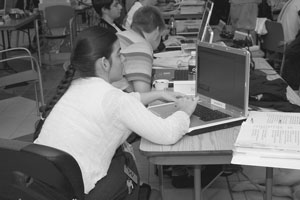
This chapter includes references and information about web resources, video presentations, and training materials available from DO-IT.
DO-IT Web Pages
The following DO-IT web pages are of particular relevance for creating programs that help students with disabilities succeed in college and careers and use technology as an empowering tool.
AccessCAREERS
Resources that include a searchable knowledge base of questions and answers, case studies, and promising practices that promote career success for people with disabilities.
www.washington.edu/doit/programs/accesscollege/employment-office/overview
AccessCollege: Postsecondary Education and Students with Disabilities
Resources for students and educators that promote postsecondary success for students with disabilities.
www.washington.edu/doit/programs/accesscollege
AccessComputing
Resources that include a searchable knowledge base of questions and answers, case studies, and promising practices that promote participation of individuals with disabilities in computing careers.
www.washington.edu/accesscomputing
AccessSTEM
Resources that include a searchable knowledge base of questions and answers, case studies, and promising practices that promote participation of individuals with disabilities in STEM careers.
www.washington.edu/doit/programs/accessstem/overview
DO-IT Pals
An e-mentoring community for teens with disabilities.
www.washington.edu/doit/programs/do-it-pals
DO-IT Publications, Videos, and Training Materials
Products that promote the success of people with disabilities in challenging academic programs and careers, using technology as an empowering tool.
www.washington.edu/doit/resources
DO-IT: Research to Practice
A summary of research on which DO-IT practices are based.
www.washington.edu/doit/resources/reference-lists/do-it-research-practice
DO-IT Scholars Program
A multiple-year transition program to help teens with disabilities prepare for college and careers.
www.washington.edu/doit/programs/do-it-scholars/overview
DO-IT Snapshots: Bios of the DO-IT Scholars
Bios written by current and past DO-IT Scholars.
www.washington.edu/doit/programs/do-it-scholars/snapshots
Technology and Universal Design
Video presentations and web resources about assistive technology and universal design of information technology.
www.washington.edu/doit/resources/popular-resource-collections/accessible-technology
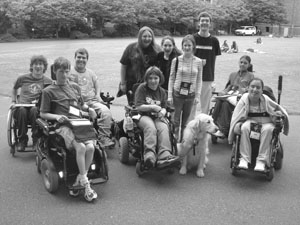
DO-IT Video Presentations
The following video productions are available on DVDs for purchase through DO-IT and are available for free online viewing at www.washington.edu/doit/do-it-videos. Trainers who wish to have copies of DO-IT videos to store on their computers for noncommercial purposes can obtain copies without charge by making a request to doit@uw.edu.
DO-IT Programs 1
DO-IT Pals: An Internet Community
Peer and mentor support in an online community for people with disabilities (9 minutes).
DO-IT Scholars
Participants tell about the DO-IT Scholars program for high school students with disabilities (11 minutes).
Snapshots: The DO-IT Scholars
Participants tell about their experiences in DO-IT programs (28 minutes).
Finding Gold: Hiring the Best and the Brightest
Employers in work-based learning programs show how to fully include participants with disabilities (7 minutes).
DO-IT Programs 2
How DO-IT Does It
Successful practices employed by DO-IT programs to increase the success of young people with disabilities in college and careers (34 minutes).
Opening Doors: Mentoring on the Internet
Adult mentors help students with disabilities achieve success in college studies and careers (14 minutes).
DO-IT Self-Determination 1
Taking Charge 1: Three Stories of Success and Self-Determination
Successful young people with disabilities share strategies for living self-determined adult lives (17 minutes).
Taking Charge 2: Two Stories of Success and Self-Determination
Testimonials from teens with disabilities learning to live self-determined lives, featuring two high school students (15 minutes).
Taking Charge 3: Five Stories of Success and Self Determination
A combination of the stories presented in Taking Charge 1 and 2 videos. Testimonials from successful people with disabilities regarding living self-determined lives, featuring five individuals in high school, college, and careers (27 minutes).
DO-IT STEM 1
Working Together: Science Teachers and Students with Disabilities
Successful science students with disabilities suggest ways to make science activities accessible (13 minutes).
Equal Access: Science and Students with Sensory Impairments
Students and employees with sensory impairments share strategies for success (14 minutes).
The Winning Equation: Access + Attitude = Success in Math and Science
Science and math teachers share strategies for making these subject areas accessible to students with a wide range of disabilities (15 minutes).
STEM: Science, Technology, Engineering, Mathematics at the University of Washington
Students and faculty highlight exciting academic programs offered to a diverse students body at the University of Washington (10 minutes).
DO-IT Careers 1
Learn and Earn: Tips for Teens
Students with disabilities show how they benefit from work-based learning (13 minutes).
Learn and Earn: Supporting Teens
Parents, teachers, and mentors encourage teens to participate in work-based learning (13 minutes).
It's Your Career
College students with disabilities gain work-based learning experiences (13 minutes).
Access to the Future: Preparing Students with Disabilities for Careers
How to make college career development services accessible to students with disabilities (14 minutes).
DO-IT Technology 1
Working Together: People with Disabilities and Computer Technology
Adaptive technology and computer applications for people with disabilities (14 minutes).
Working Together: Computers and People with Mobility Impairments
People with mobility impairments demonstrate computer access technology (14 minutes).
Working Together: Computers and People with Sensory Impairments
People with visual and hearing impairments demonstrate computer technology for school and work (11 minutes).
Working Together: Computers and People with Learning Disabilities
Students and workers with learning disabilities demonstrate computer-based tools and strategies (10 minutes).
Computer Access: In Our Own Words
Students with disabilities demonstrate adaptive technology and computer applications (10 minutes).
DO-IT Technology 2
Equal Access: Universal Design of Computer Labs
This presentation shows how computer labs can be designed as to be accessible to students with disabilities (11 minutes).
World Wide Access: Accessible Web Design
People with disabilities describe roadblocks they encounter on the World Wide Web and examples of accessible web design techniques (11 minutes).
Real Connections: Making Distance Learning Accessible to Everyone
This presentation highlights issues to consider when designing courses to fully include students with disabilities (12 minutes).
Access to Technology in the Workplace: In Our Own Words
Testimonials from employees on making technology accessible in the workplace (13 minutes).
Camp: Beyond Summer
How to add Internet experiences to summer camp programs for children and youth with disabilities (10 minutes).
DO-IT Transition 1
College: You Can DO-IT!
College students with disabilities and staff share advice for success in college (14 minutes).
Moving On: The Two-Four Step
How to successfully transition from two- to four-year postsecondary institutions (11 minutes).
Taking Charge 1: Three Stories of Success and Self-Determination
Testimonials from successful people with disabilities regarding living self-determined lives (17 minutes).
DO-IT College 1
Working Together: Faculty and Students with Disabilities
Successful students with disabilities tell the viewers firsthand about techniques and accommodations that contributed to their success. They emphasize the importance of the faculty-student relationship (9 minutes).
Building the Team: Faculty, Staff, and Students Working Together
Learn how to create an inclusive postsecondary learning environment (16 minutes).
Equal Access: Universal Design of Instruction
Learn strategies for making instruction in a classroom or in a tutoring center accessible to all students (13 minutes).
Equal Access: Student Services
How to apply universal design principles to make postsecondary student services accessible to all students (15 minutes).
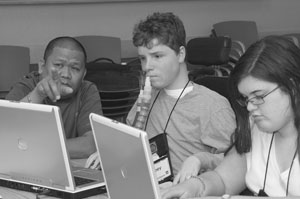
DO-IT Publications
The following DO-IT publications, ready for duplication, can be distributed to staff and/or transition program participants.
- An Accommodation Model
- Building the Team: Faculty, Staff, and Students Working Together
- College Funding Strategies for Students with Disabilities
- College Survival Skills
- College: You Can DO-IT!
- Disability-Related Resources on the Internet
- Learn and Earn: Tips for Teens
- Learn and Earn: Supporting Teens
- Making Science Labs Accessible to Students with Disabilities
- Opening Doors: Mentoring on the Internet
- Preparing for a Career: An Online Tutorial
- Preparing for College: An Online Tutorial
- Taking Charge: Stories of Success and Self-Determination
- Universal Design of Instruction: Definitions, Principles, and Examples
- The Winning Equation: Access + Attitude = Success in Math and Science
- Working Together: Computers and People with Learning Disabilities
- Working Together: Computers and People with Mobility Impairments
- Working Together: Computers and People with Sensory Impairments
- Working Together: People with Disabilities and Computer Technology
- Working Together: Science Teachers and Students with Disabilities
The most current editions of these and other publications are freely available online at www.washington.edu/doit/resources. Permission is granted to duplicate and distribute them for noncommercial purposes, provided the source is acknowledged.
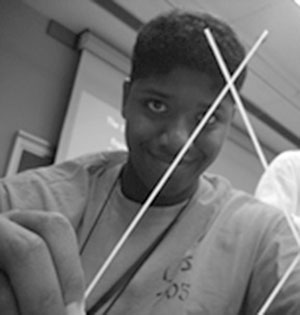
Electronic Resources
The following resources provide a good place to start as you continue your exploration of ways to encourage college-bound young people to reach their highest potential in school, in careers, and in other life experiences.
ABLEDATA [Seems to now be defunct]
AccessCAREERS
www.washington.edu/doit/programs/accesscollege/employment-office/overview
AccessCollege
www.washington.edu/doit/programs/accesscollege
Adolescent Health Transition Project
https://innovations.ahrq.gov/qualitytools/adolescent-health-transition-project
The Alliance for Technology Access
http://www.icdri.org/community/ata.htm
American Association of People with Disabilities
www.aapd.com
ADA (Americans with Disabilities Act) National Network
www.adata.org
The Arc
www.thearc.org
Be a Mentor Program
www.beamentor.org/wp
Center for Applied Special Technology (CAST)
www.cast.org
Center for Self-Determination
www.self-determination.com
Child Safety on the Information Highway: National Center for Missing and Exploited Children
www.safekids.com/child-safety-on-the-information-highway
College Preparation Resources for Students with Disabilities
www.washington.edu/doit/programs/accesscollege/student-lounge/college
DO-IT (Disabilities, Opportunities, Internetworking, and Technology)
www.washington.edu/doit
DisABILITY Information and Resources
www.makoa.org
E-Volunteerism
www.evolunteerism.com
Family Village: A Global Community of Disability Related Resources
www.familyvillage.wisc.edu
Got a Good Mentor? Hold Up Your End of the Bargain
www.esight.org/index.cfm?x=1319
HEATH Resource Center
heath.gwu.edu
Institute on Community Integration
ici.umn.edu
The International Center for Disability Resources on the Internet (ICDRI)
www.icdri.org
Internet Safety: A Note to Parents, Guardians and Teachers World Kids Network
www.worldkids.net/school/safety/internet/guidance.html
Job Accommodation Network
askjan.org/
Kids as Self-Advocates (KASA)
www.fvkasa.org
Kidz Privacy: Adults Only Federal Trade Commission
www.ftc.gov/bcp/conline/edcams/kidzprivacy/adults.htm
Kid Source Online
www.kidsource.com
Kids Together, Inc. Information and Resources for Children & Adults with Disabilities
kidstogether.org/
Kid Zone: Where Kids Can Play and Learn
www.ldonline.org/kids
The Librarian's Guide to Cyberspace for Parents & Kids American Library Association
https://www.ala.org/ala/alsc/greatwebsites/greatsitesbrochure.pdf
Mapping Your Future
www.mappingyourfuture.org
MentorNet: The E-Mentoring Network for Diversity in Engineering and Science
www.mentornet.net
National Center on Secondary Education and Transition (NCSET)
www.ncset.org
National Council on Independent Living
ncil.org/
National Council on Disability
ncd.gov/
National Dissemination Center for Children with Disabilities
www.nichcy.org
National Mentoring Center
www.nwrel.org/mentoring
National Mentoring Partnership
www.mentoring.org
National Organization on Disabilities
www.nod.org
National Youth Development Information Center
www.nydic.org/nydic
National Youth Leadership Network
www.nyln.org
The OHSU Center on Self-Determination
www.ohsu.edu/oidd/CSD
PACER (Parent Advocacy Coalition for Education Rights)
www.pacer.org
A Parent's Guide to Internet Safety Federal Bureau of Investigation
www.fbi.gov/stats-services/publications/parent-guide
People First
www.peoplefirst.org
Self-Determination Synthesis Project
www.uncc.edu/sdsp
ServiceLeader.org Virtual Volunteering
www.serviceleader.org/virtual
Students with Disabilities Preparing for Postsecondary Education: Know Your Rights and Responsibilities
www2.ed.gov/about/offices/list/ocr/transition.html
Think College
U.S. Department of Education
www.thinkcollege.net
U.S. Department of Labor Employment & Training Administration
www.doleta.gov
Winners On Wheels
www.wowusa.com
What a Mentor Can Do for You
www.esight.org/index.cfm?x=1198
World Friends, Resources, and Disabilities
www.seattleschools.org/schools/hale/friends/wf_home.htm
World Institute on Disability
wid.org/
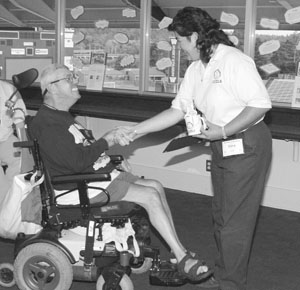
References
American Association for the Advancement of Science. (2001). In pursuit of a diverse science, technology, engineering, and mathematics workforce. Washington, DC: Author.
America's Promise–The Alliance for Youth. (2006). Every child, every promise: A report on our nation's young people. Alexandra, VA: Author. Retrieved January 1, 2007, from www.americaspromise.org/ECEP.aspx?id=208
Benz, R. B., Yovanoff, P., & Doren, B. (1997). School-to-work components that predict post-school success for students with and without disabilities. Exceptional Children, 63(2), 151–165.
Blackorby, J., & Wagner, M. (1996). Longitudinal postschool outcomes of youth with disabilities: Findings from the National Longitudinal Transition Study. Exceptional Children, 62, 399–413.
Burgstahler, S. (1997). Peer support: What role can the Internet play? Journal of Information Technology and Disabilities, 4(4). Retrieved January 1, 2007, from http://itd.athenpro.org/volume4/number4/article2.html
Burgstahler, S. (2001). A collaborative model promotes career success for students with disabilities: How DO-IT does it. Journal of Vocational Rehabilitation, 16(3-4), 209–216.
Burgstahler, S. (2002a). Bridging the digital divide in postsecondary education: Technology access for youth with disabilities National Center on Secondary Education and Transition Information Brief, 1(2). Retrieved January 1, 2007, from www.ncset.org/publications/viewdesc.asp?id=718
Burgstahler, S. (2002b). Distance learning: Universal design, universal access. AACE Journal, 10(1). (ERIC Document-Reproduction Service No. EJ652501)
Burgstahler, S. (2002c). The value of DO-IT to kids who did it! Exceptional Parent, 32(11), 79–86.
Burgstahler, S. (2003a). DO-IT: Helping students with disabilities transition to college and careers. Minneapolis, MN: National Center on Secondary Education and Transition. Research to practice brief.
Burgstahler, S. (2003b). Opening doors: Mentoring on the Internet. Seattle, WA: DO-IT, University of Washington. Retrieved January 1, 2007, from www.washington.edu/doit/opening-doors-mentoring-internet
Burgstahler, S. (2003c). The role of technology in preparing youth with disabilities for postsecondary education and employment. Journal of Special Education Technology, 18(4).
Burgstahler, S. (2006a). Creating an e-mentoring community: How DO-IT does it, and how you can do it, too. Seattle: DO-IT, University of Washington. Retrieved January 1, 2007, from www.washington.edu/doit/creating-e-mentoring-community-how-do-it-does-it-and-how-you-can-do-it-too
Burgstahler, S. (2006b). Equal access: Universal design of instruction. Seattle: WA: DO-IT, University of Washington. Retrieved January 1, 2007, from www.washington.edu/doit/equal-access-universal-design-instruction
Burgstahler, S. (2006c). A model technology-rich program: How DO-IT does it. Closing the Gap, 25(3), 16, 40.
Burgstahler, S. (2006d). National Science Foundation Annual Report for Access STEM Project. Seattle: DO-IT, University of Washington.
Burgstahler, S. (2006e). Taking charge: Stories of success and self-determination. Seattle: DO-IT, University of Washington. Retrieved January 1, 2007, from www.washington.edu/doit/taking-charge-stories-success-and-self-determination
Burgstahler, S. , & Bellman, S. (2005). Perceived benefits of work-based learning: Differences between high school and postsecondary students with disabilities. Asia-Pacific Journal of Inclusive Education, 2(1), 1–20.
Burgstahler, S., & Cronheim, D. (2001). Supporting peer-peer and mentor-protege relationships on the internet. Journal of Research on Technology in Education, 34(1), pp. 59–74.
Burgstahler, S., Lopez, S., & Bellman, S. (2004). Research to practice: DO-IT prepares students with disabilities for employment. National Association of Colleges and Employers Journal, LXV(1), 27–35.
Burgstahler, S., & Orvis, M. (1995). Transition to college: Preliminary findings of four case studies. In E. Makas, H. Beth, & D. Tanis (1995). Accessing the Issues: Current Research in Disability Studies (pp. 297–301). Lewiston, ME: Society for Disability Studies.
Byers-Lang, R. E., & McCall, R. A. (1993). Peer support groups: Rehabilitation in action. RE:view, 25(1), 32–36.
Colley, D. A., & Jamieson, D. (1998). Postschool results for youth with disabilities: Key indicators and policy implications. Career Development for Exceptional Individuals, 21, 145–160.
Committee on Prospering in the Global Economy of the 21st Century. (2006). Rising above the gathering storm: Energizing and employing America for a brighter economic future. Washington, D.C.: National Academy of Sciences, National Academy of Engineering, Institute of Medicine.
Cunningham, A., Redmond, C., & Merisotis, J. (2003, February). Investing early: Intervention programs in selected U.S. states. Montreal: Canada Millennium Scholarship Foundation. Retrieved January 1, 2007, from equity.psu.edu/eopc/docs/bestprograms.pdf
DO-IT. (n.d.). Mentor Application. Seattle: University of Washington. Retrieved September 1, 2006, from www.washington.edu/doit/programs/do-it-mentors/do-it-mentors-application-intro
DO-IT. (2004). DO-IT NEWS. Seattle: DO-IT, University of Washington. Retrieved January 1, 2007, from www.washington.edu/doit/do-it-news-november-2004
DO-IT. (2005). DO-IT Mentors: Helping young people prepare for their future. Seattle: DO-IT, University of Washington. Retrieved January 1, 2007, from www.washington.edu/doit/do-it-mentors
DO-IT. (2006a). DO-IT Scholars. Seattle: DO-IT, University of Washington. Retrieved January 1, 2007, from www.washington.edu/doit/do-it-scholars
DO-IT. (2006b). Guidelines for DO-IT Scholars and Ambassadors. Seattle: DO-IT, University of Washington. Retrieved January 1, 2007, from www.washington.edu/doit/guidelines-do-it-scholars-and-ambassadors
DO-IT. (2006c). Guidelines for DO-IT Summer Study Volunteers and Instructors. Seattle: DO-IT, University of Washington. Retrieved January 1, 2007, from www.washington.edu/doit/guidelines-do-it-summer-study-volunteers-instructors
DO-IT. (2006d). It's Your Career: Work-based Learning Opportunities for College Students with Disabilities. Seattle: DO-IT, University of Washington. Retrieved January 1, 2007, from www.washington.edu/doit/its-your-career-work-based-learning-opportunities-college-students-disabilities
Field, S., Martin, J., Miller, R., Ward, M., & Wehmeyer, M. (1998). Self-determination for persons with disabilities: A position statement of the division on career development and transition. CDEI, 21(2), 113–128.
Hawken, K., Duran, R. L., & Kelly, L. (1991). The relationship of interpersonal communication variables to academic success and persistence in college. Communication Quarterly, 19(4), 297–308.
Herrera, C., Vang, Z., & Gale, L.Y. (2002). Group mentoring: A study of mentoring groups in three programs. San Francisco: Public/Private Ventures. Retrieved January 1, 2007, from www.ppv.org/ppv/publications/publications_description.asp?search_id=7&publication_id=153
Kaye, H. S. (2000). Disability and the digital divide. (Disability Statistics Abstract Rep. No. 22). Washington, DC: U.S. Department of Education, National Institute on Disability and Rehabilitation Research.
Kim-Rupnow, S., & Burgstahler, S. (2004). Perceptions of students with disabilities regarding the value of technology-based support activities on postsecondary education and employment. Journal of Special Education Technology, 19(2), 43–56. Retrieved January 1, 2007, from jset.unlv.edu/19.2/rupnow/first.html
Kram, K. E., & Isabella, L. A. (1985). Mentoring alternatives: The role of peer relationships in career development. Academy of Management Journal, 28(1), 110–132.
National Center for Education Statistics. (2000). What are the barriers to the use of advanced telecommunications for students with disabilities in public schools? (Rep. No. 2000-042). Washington, DC: U.S. Department of Education, Office of Educational Research and Improvement.
National Collaborative on Workforce and Diversity (2006). The 411 on disability disclosure: A workbook for youth with disabilities. Washington, D.C.: Author.
National Council on Disability. (2000). Federal policy barriers to assistive technology. Washington, DC: Author.
National Council on Disability and Social Security Administration. (2000). Transition and postschool outcomes for youth with disabilities: Closing the gaps to postsecondary education and employment. Washington, DC: Author.
National Science Foundation. (2000). Women, minorities, and persons with disabilities in science and engineering. Arlington, VA: Author. Retrieved January 1, 2007, from http://wayback.archive-it.org/5902/20160210155257/http://www.nsf.gov/statistics/nsf00327/
National Science Foundation. (2005). Research in disabilities education (NSF 05-623). Arlington, VA: Author.
National Science Foundation. (2006). Investing in America's future. Washington, D.C.: Author.
Office of Science and Technology Policy. (2006). American competitiveness initiative: Leading the world in innovation. Washington, D.C.: Author.
Phelps, L. A., & Hanley-Maxwell, C. (1997). School-to-work transitions for youth with disabilities: A review of outcomes and practices. Review of Educational Research, 67(2), 197–226.
Rheingold, H. (1993). The virtual community: Homesteading on the electronic frontier. Reading, MA: Addison-Wesley.
Saito, R. N., & Blyth, D. A. (1992). Understanding mentoring relationships. Minneapolis, MN: Search Institute.
Schmetzke, A. (2001). Online distance education: Anytime, anywhere but not for everyone. Information Technology and Disability, 7(2). Retrieved January 1, 2007, from http://itd.athenpro.org/volume7/number2/axel.html
Search Institute. (2005). Asset categories. Minneapolis: Author.
Sipe, C. L. & Roder, A. E. (1999). Mentoring school-age children: A classification of programs. Philadelphia: Public/Private Ventures. Retrieved September 1, 2006, from www.ppv.org/ppv/publications/publications_description.asp?search_id=7&publication_id=38
Stainback, W., Stainback, S., & Willkinson, A. (1992). Encouraging peer supports and friendships. Teaching Exceptional Children, 24(2), 6–11.
Stodden, R. A., & Dowrick, P. W. (2000). Postsecondary education and quality employment for adults with disabilities. American Rehabilitation, 25(3), 19–23.
Unger, D., Wehman, P., Yasuda, S., Campbell, L., & Green, H. (2001, March 7–9). Human resource professionals and the employment of persons with disabilities: A business perspective. Paper presented at Capacity Building Institute, University of Hawaii.
Waddell, C. D. (1999). The growing digital divide in access for people with disabilities: Overcoming barriers to participation in the digital economy. Retrieved September 1, 2006, from www.icdri.org/CynthiaW/the_digital_divide.htm
Wagner, M. M., & Blackorby, J. (1996). Transition from high school to work to college: How special education students fare. The Future of Children, 6(1), 103-120.
Wighton, D. J. (1993). Telementoring: An examination of the potential for an educational network. British Columbia: Education Technology Centre of the University of British Columbia. Retrieved January 1, 2007, from mentor.creighton.edu/htm/telemen
Yelin, E., & Katz, P. (1994). Labor force trends of persons with and without disabilities. Monthly Labor Review, 117, 36–42